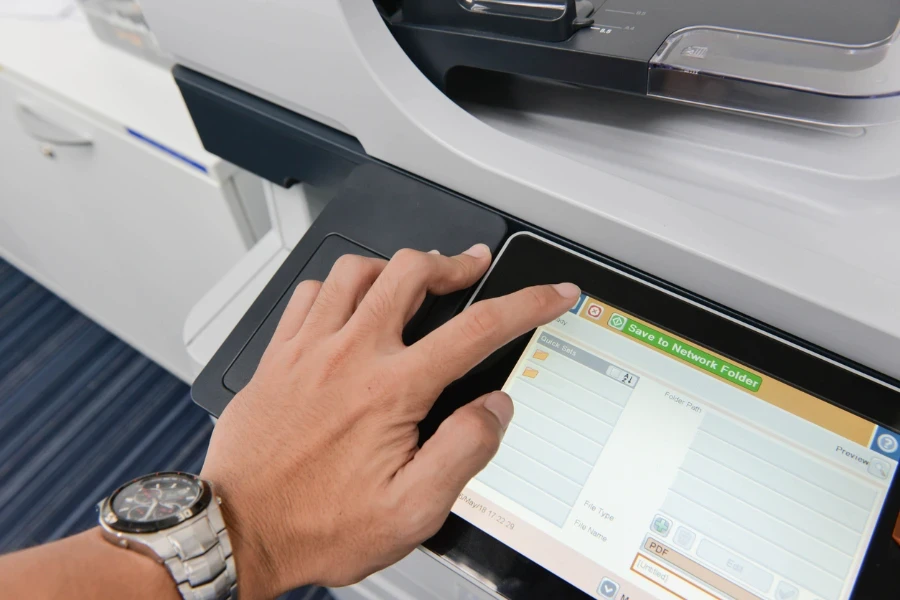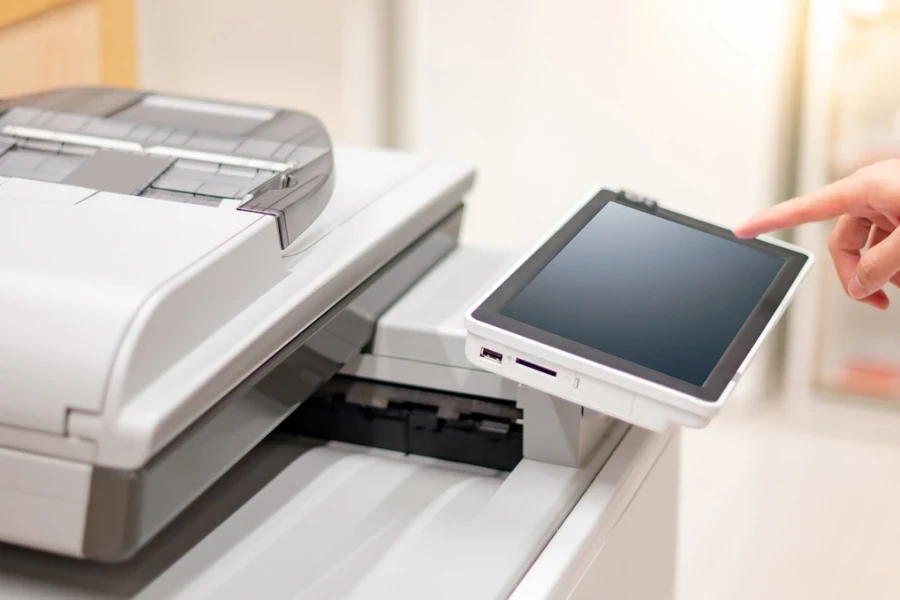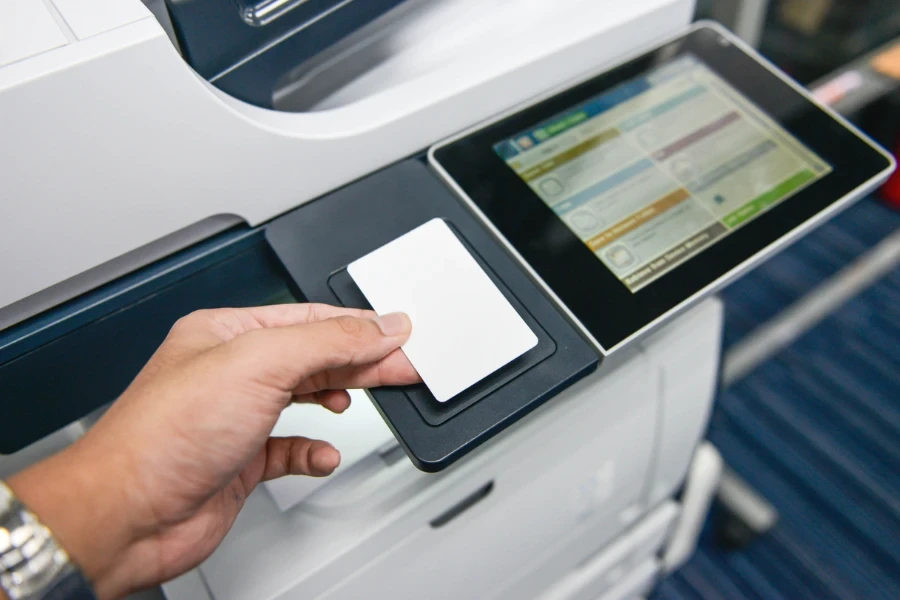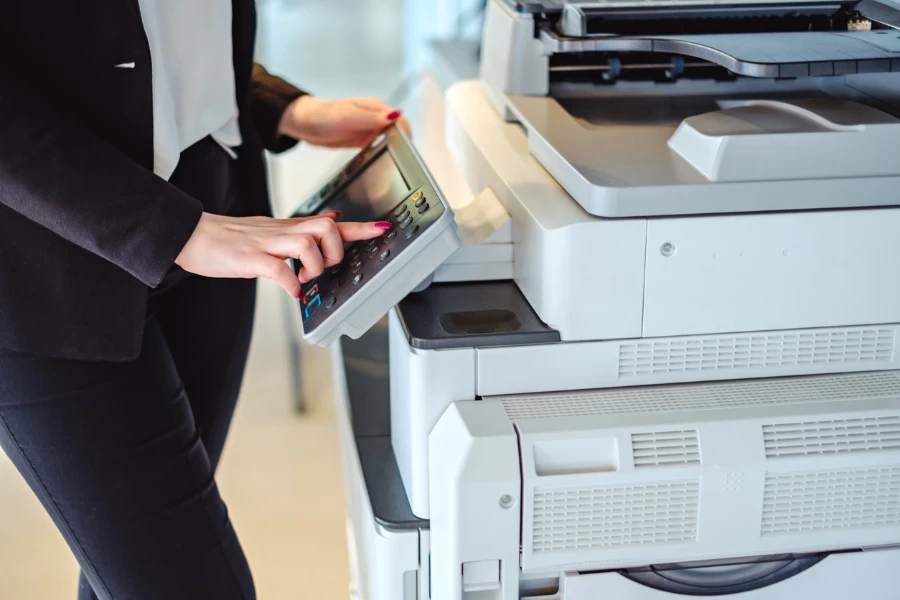Screenprinting is an art form and a technical process that has captivated creatives and manufacturers alike. This versatile printing technique allows for the reproduction of vibrant designs on a variety of materials. In this blog, we’ll explore the intricacies of screenprinters, how they operate, their applications, cost considerations, and the leading models available today.
Table of Contents:
– What is a screenprinter?
– How do screenprinters work?
– How to use a screenprinter
– How much does a screenprinter cost?
– Top screenprinters on the market
What is a screenprinter?

A screenprinter, often referred to as a silk screen printer, is a device used to transfer ink onto a substrate (usually fabric or paper) through a mesh screen, except in areas made impermeable to the ink by a blocking stencil. This printing method is favored for its ability to produce vibrant, long-lasting colors and intricate designs. The versatility of screenprinting makes it a preferred choice for a wide range of applications, from creating custom t-shirts and posters to high-volume industrial manufacturing.
The core components of a screenprinter include the frame, screen, squeegee, ink, and substrate. The frame holds the screen tightly, ensuring a flat, even surface for printing. The screen, traditionally made of silk but now often composed of synthetic materials, is where the design is imposed. The squeegee is used to press ink through the screen, and the substrate is the material receiving the inked design. The combination of these components allows for the creation of sharp, professional-quality prints.
Screenprinters come in various forms, from manual setups for artisanal projects to sophisticated, automated machines designed for industrial use. The choice of screenprinter depends on the scale of production, the complexity of designs, and the type of materials being printed on. Regardless of the specific model, the fundamental principles of screenprinting remain consistent, offering a blend of creativity and technical precision.
How do screenprinters work?

The operation of a screenprinter is a fascinating process that combines art with technology. It begins with the creation of a stencil, which is applied to the screen to block off areas where ink should not be transferred. This stencil can be created through various methods, including direct emulsion, photographic processes, or hand-cutting. Once the stencil is in place, the screen is positioned over the substrate.
Ink is then placed on the screen, and a squeegee is used to evenly spread the ink across the surface, pressing it through the mesh and onto the substrate below. The key to successful screenprinting lies in the precise control of the squeegee’s pressure and angle, ensuring that the ink penetrates the open areas of the mesh without bleeding beyond the bounds of the stencil.
After the ink is applied, the printed substrate is removed from the machine and sent through a drying process. The drying, or curing, solidifies the ink, making the print durable and resistant to fading. This step is crucial for ensuring the longevity and quality of the printed design. The entire process, from stencil creation to curing, highlights the blend of manual skill and mechanical precision that screenprinting demands.
How to use a screenprinter

Using a screenprinter effectively requires a blend of technical knowledge and creative skill. The first step is to prepare your design and stencil. This preparation involves selecting the right type of screen and mesh count for your design’s detail level and the ink viscosity. Once the stencil is prepared and applied to the screen, you’re ready to begin printing.
Position the substrate correctly under the screen and ensure the screen is securely clamped down. Apply a line of ink along one edge of the screen, and using the squeegee, pull the ink across the screen with firm, even pressure. The angle and pressure of the squeegee are critical for achieving a clean, crisp print. After printing, carefully lift the screen to avoid smudging and proceed with the curing process.
Regular maintenance of your screenprinter is also essential. This includes cleaning the screen after each use, ensuring the squeegee is free of nicks or warping, and checking the machine’s components for wear and tear. Proper usage and maintenance not only extend the life of your screenprinter but also ensure consistent, high-quality prints.
How much does a screenprinter cost?

The cost of a screenprinter can vary widely based on its type, size, and level of automation. Manual screenprinting kits for hobbyists and small-scale projects can start as low as $100 to $200. These kits typically include a basic frame, screen, squeegee, and inks, offering a cost-effective way for beginners to explore screenprinting.
For more serious enthusiasts or small businesses, semi-professional models range from $1,000 to $5,000. These machines offer greater precision, capacity, and durability, suitable for producing higher volumes of prints with consistent quality. Features might include micro-registration for precise alignment, multiple stations for color layering, and enhanced screen tensioning systems.
At the high end of the spectrum, fully automated screenprinting machines designed for industrial use can cost anywhere from $10,000 to over $100,000. These advanced systems provide rapid, high-volume production capabilities, automatic color registration, and integrated drying solutions. The investment in such equipment is justified by the efficiency and scalability it brings to large-scale operations.
Top screenprinters on the market

When it comes to selecting the best screenprinter, the market offers a variety of options tailored to different needs and budgets. For hobbyists and small businesses, the Yudu Personal Screenprinter stands out for its user-friendly design and versatility, making it an excellent choice for getting started with screenprinting at home.
Mid-range options like the Riley Hopkins JR. 4 Color 1 Station Screen Printing Press combine affordability with professional features, such as precise micro-registration and sturdy construction. This model is ideal for small businesses looking to produce high-quality prints without a significant initial investment.
For industrial applications, the M&R Stryker Automatic Screen Printing Press represents the pinnacle of screenprinting technology. Offering unparalleled speed, accuracy, and reliability, this machine is designed to meet the demands of high-volume production environments. Its advanced features, including automatic screen cleaning and on-the-fly adjustments, make it a top choice for serious screenprinting professionals.
Conclusion: Screenprinters are versatile tools that cater to a wide range of applications, from artistic projects to commercial manufacturing. Understanding how they work, how to use them effectively, and what models fit your needs and budget are crucial for anyone looking to explore or expand their screenprinting capabilities. With the right screenprinter, you can unlock a world of creative potential and operational efficiency, whether you’re a hobbyist, a small business, or a large-scale industrial operation.




